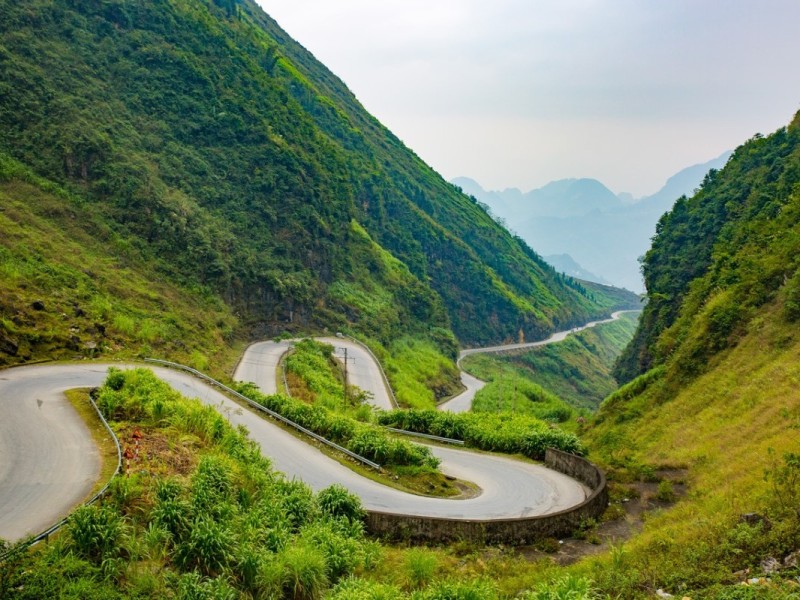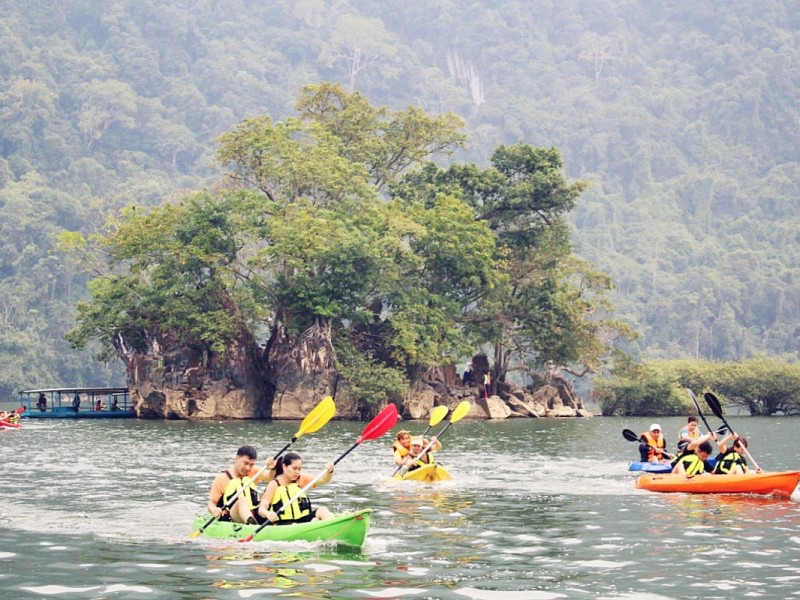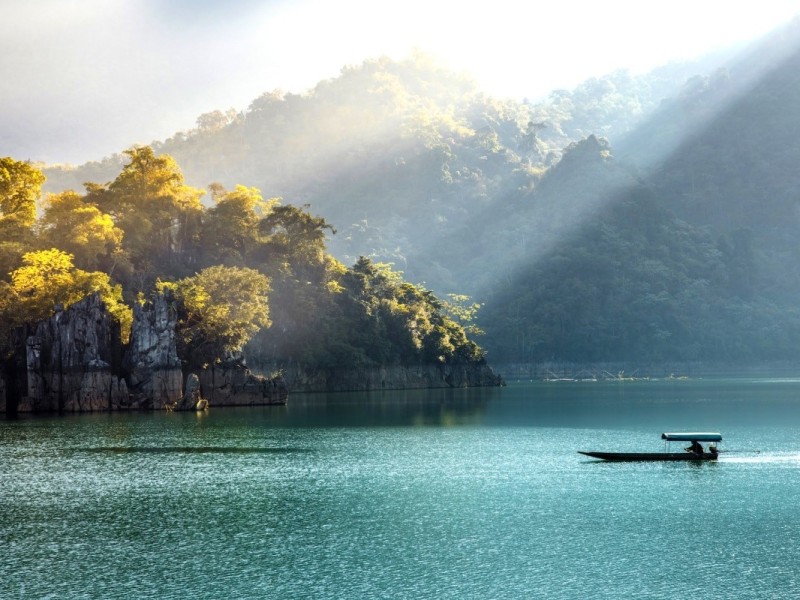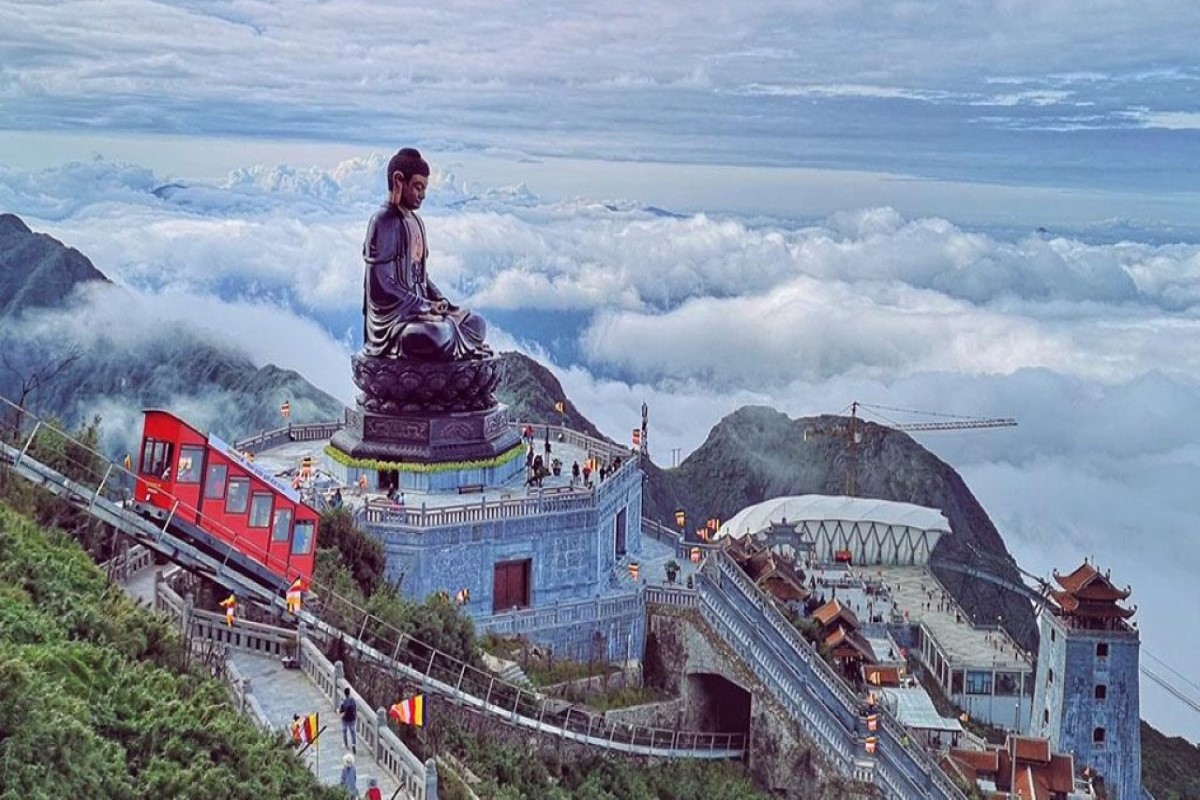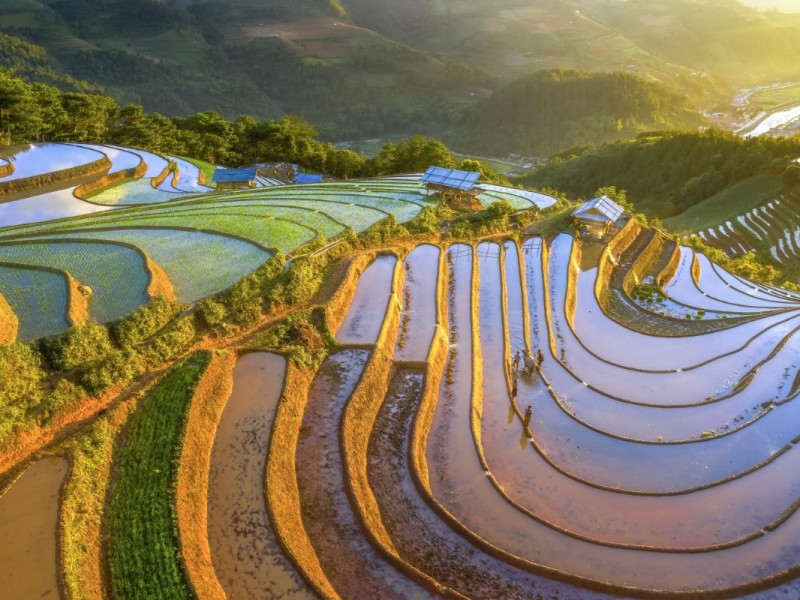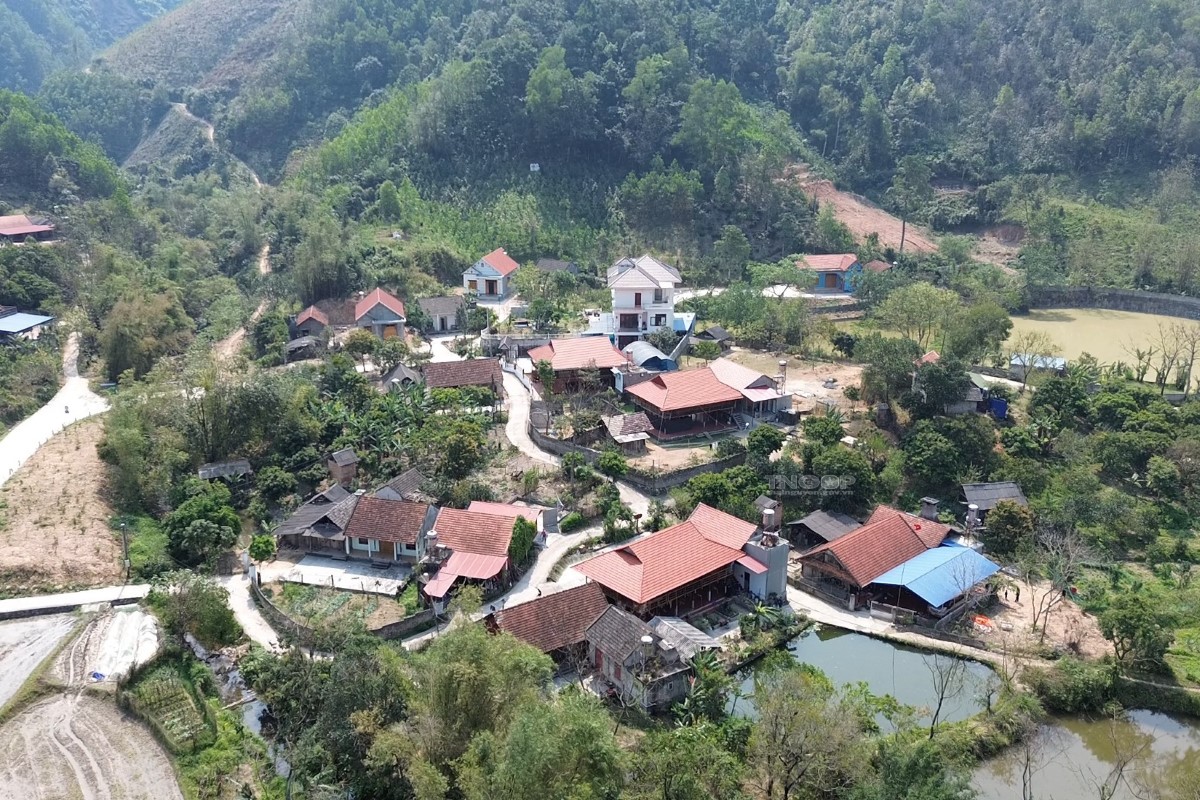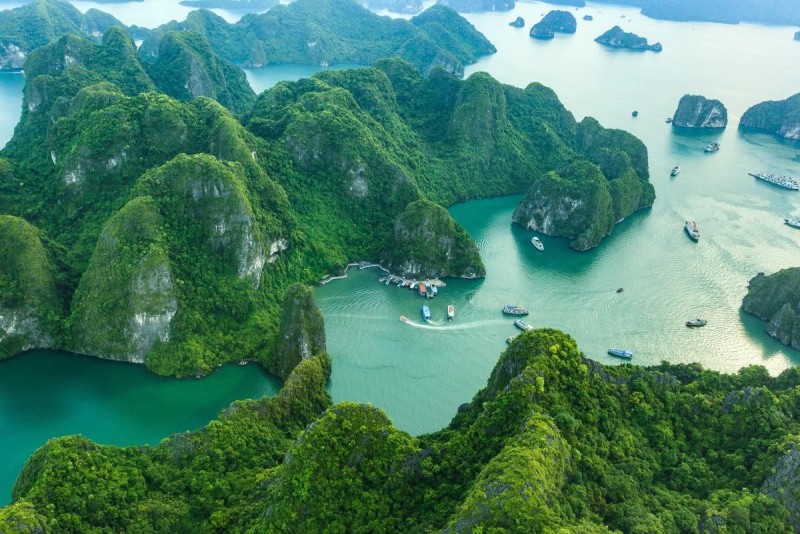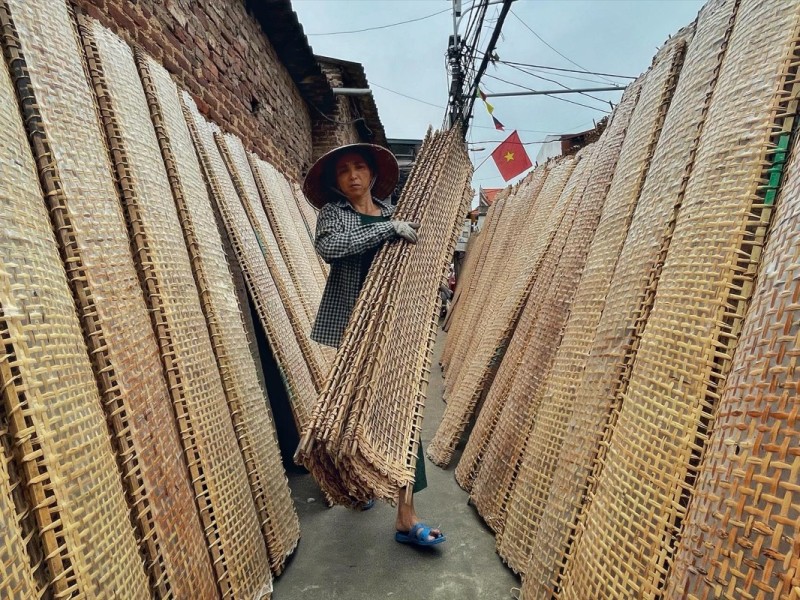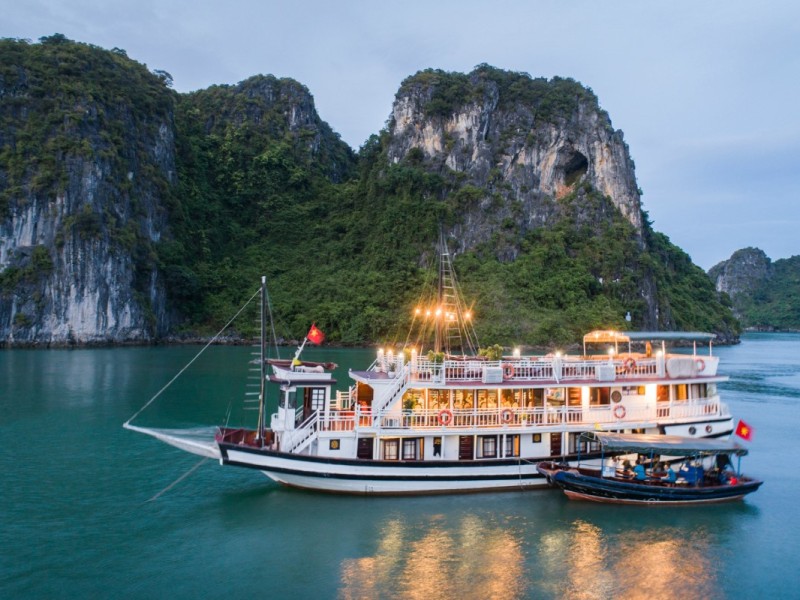Cao Bang Travel Guide: Explore Ban Gioc Waterfall and Pac Bo Cave
Cao Bang Travel Guide offers a detailed look at the natural and cultural wonders of Ban Gioc Waterfall and Pac Bo Cave. It highlights stunning landscapes, historic sites, and rich ethnic traditions, providing travelers with essential information to explore this unique northern Vietnamese destination.
Overview: Cao Bang Vietnam
If you’re looking to discover a hidden gem in Northern Vietnam, Cao Bang offers a stunning mix of natural wonders, rich history, and vibrant ethnic cultures. Located near the border with China, this remote province captivates with its majestic waterfalls, mysterious caves, and authentic local traditions. Below is a concise summary to help you quickly understand what makes Cao Bang a must-visit destination.
- Official Name: Cao Bang Province (Tỉnh Cao Bằng)
- Type of Place: Mountainous province known for natural landscapes, waterfalls, caves, and ethnic cultural heritage
- Location: Cao Bang City and surrounding districts, Cao Bang Province, Northeast Region, Northern Vietnam, bordering China
- Unique Appeal: A serene and largely untouched destination combining breathtaking natural landmarks like Ban Gioc Waterfall with profound historical sites such as Pac Bo Cave—where Vietnam’s revolutionary movement was shaped.
- Outstanding Features:
- Towering Ban Gioc Waterfall, one of Asia’s largest and most powerful waterfalls, straddling the Vietnam-China border, delivering awe-inspiring sights and sounds.
- Mysterious limestone caves like Nguom Ngao, featuring intricate stalactites and stalagmites that reveal nature’s artistry over millennia.
- Diverse ethnic minority cultures (Tay, Nung, Dao) with vibrant festivals, traditional brocade weaving, and authentic village homestays offering deep cultural immersion.
- Scenic landscapes of lush mountains, deep valleys, and pristine lakes such as Thang Hen Lake, ideal for trekking, kayaking, and photography.
- Historically significant sites like Pac Bo Cave, key to Vietnam’s independence movement led by Ho Chi Minh.
- How to Get There: Accessible by daily bus or private car from Hanoi, with a travel time of approximately 6 to 8 hours. The route offers picturesque scenery en route to Cao Bang City and surrounding attractions.
- Visit Duration: 2 to 4 days is recommended to explore major natural and cultural sites comfortably.
- Best Time to Visit: June to October (rainy season) for powerful waterfalls and lush landscapes; November to May (dry season) for clearer views and better trekking conditions.
- Entry Fee: Ban Gioc Waterfall has a nominal entry fee (~40,000 VND); many other sites require minimal or no fees; guided tours often include entrance.
- Accessibility: Mostly accessible by road; some natural sites require moderate walking or trekking; not fully wheelchair accessible due to rugged terrain and cave explorations.
- Top Activities:
- Take a boat ride near Ban Gioc Waterfall to feel the mist and capture stunning close-up photos.
- Explore Nguom Ngao Cave with a guided tour to marvel at limestone formations and local legends.
- Kayak on the calm waters of Thang Hen Lake amid serene nature.
- Trek through remote mountain trails to discover ethnic villages and panoramic vistas.
- Experience local festivals and traditional brocade weaving in Tay and Nung communities.
- Responsible Travel Tip: Respect local customs and traditions, especially when visiting ethnic minority villages, and minimize environmental impact by avoiding littering and staying on marked trails.
- Fun Fact: Ban Gioc Waterfall is considered the fourth largest waterfall along a national border in the world, making it a unique transnational natural wonder.
- Visiting Tips:
- Bring sturdy hiking shoes and waterproof gear if visiting during the rainy season.
- Book guided tours in advance, especially during peak festival times, to ensure access and deeper insights.
- Try local delicacies like ant egg cake for an authentic taste of Cao Bang’s culinary heritage.
This overview gives you a quick yet comprehensive snapshot of Cao Bang, helping you plan an unforgettable journey to this spectacular and culturally rich corner of Vietnam.
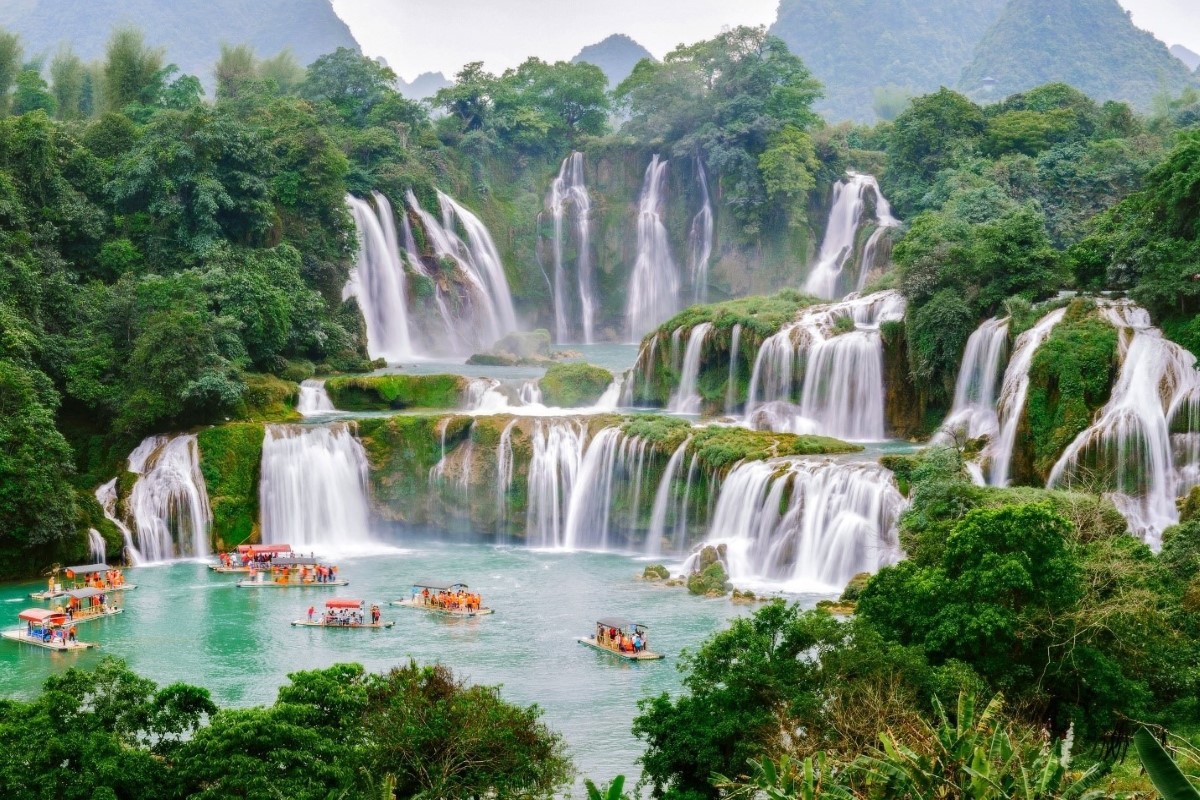
Introduction to Cao Bang Province
Cao Bang is an extraordinary destination filled with untapped beauty and diverse cultural heritage. Visitors are often enchanted by its unique position near the Chinese border, which influences its tourism, while its isolation from mass tourism gives it a peaceful, serene atmosphere that many crave. In this section, we will explore Cao Bang’s geography, its role in Vietnam's revolutionary history, and why this province is a perfect destination for travelers seeking authenticity.

Overview of Cao Bang’s Geography and History
Cao Bang stands as one of the most geographically significant provinces in Vietnam. Its remote location has helped preserve its natural beauty and cultural richness, making it an ideal destination for those looking to escape the hustle and bustle of major cities.
Location and Borders
Cao Bang is located in Northern Vietnam, bordering China, which gives it a unique blend of Vietnamese and Chinese cultural influences. It is surrounded by majestic mountains, deep valleys, and stunning landscapes that make it an untouched paradise. The region’s remote geography has helped it maintain its pristine nature, attracting travelers who seek peace and tranquility.
Historical Importance in Vietnam’s Revolutionary Movement
Pac Bo Cave, located in Cao Bang, played a crucial role in Vietnam’s revolutionary history. It served as the base for Ho Chi Minh's operations in the 1940s, where he planned the country's liberation movement against French colonization. Visitors can explore this significant site to learn about Vietnam’s journey to independence and its ties to the country's revolutionary heritage.
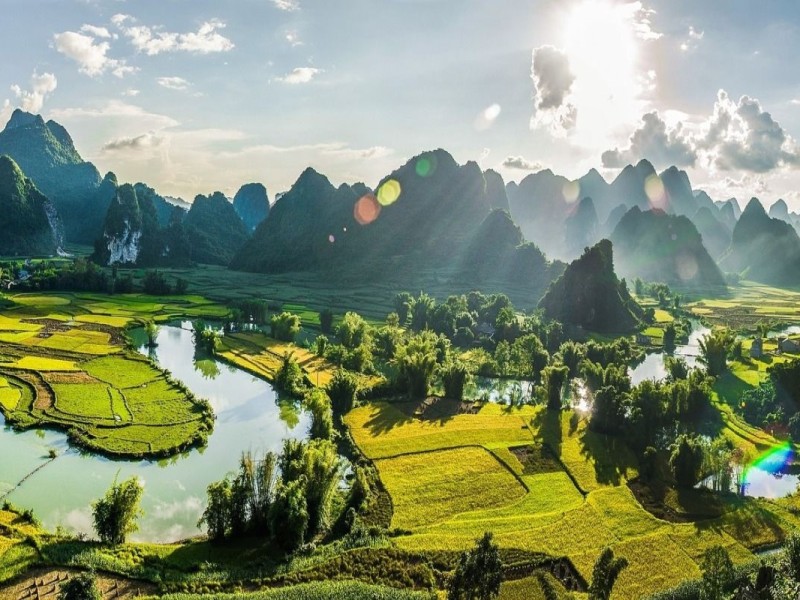
Cao Bang’s Geographical Significance
Nestled in northern Vietnam, Cao Bang stands out for its unique geographical location, which plays a pivotal role in shaping its natural beauty and cultural diversity. Bordered by China to the north, this region is characterized by stunning limestone karsts, deep valleys, lush forests, and serene rivers that flow through its landscapes. Its proximity to the border not only enhances its strategic significance but also creates a fascinating blend of Vietnamese and Chinese influences, offering travelers a chance to experience a harmonious mix of both cultures. This remote and relatively unexplored destination remains a haven for adventurers and those seeking the tranquility of nature away from the crowded tourist trails, making Cao Bang a true hidden gem.
Bordering China
Being a province that shares its border with China, Cao Bang has become a cultural crossroad where travelers can witness the merging of Vietnamese and Chinese cultures. This has influenced the local markets, food, and daily life, offering visitors a unique cultural experience.
Unexplored Beauty
Despite its immense historical and cultural value, Cao Bang remains largely unexplored by mass tourism, making it a perfect getaway for those seeking quiet, unspoiled natural landscapes. Travelers are drawn to its untouched beauty, which contrasts with the more crowded tourist destinations in Vietnam. The region’s isolation ensures that visitors experience a raw and authentic side of Vietnam.
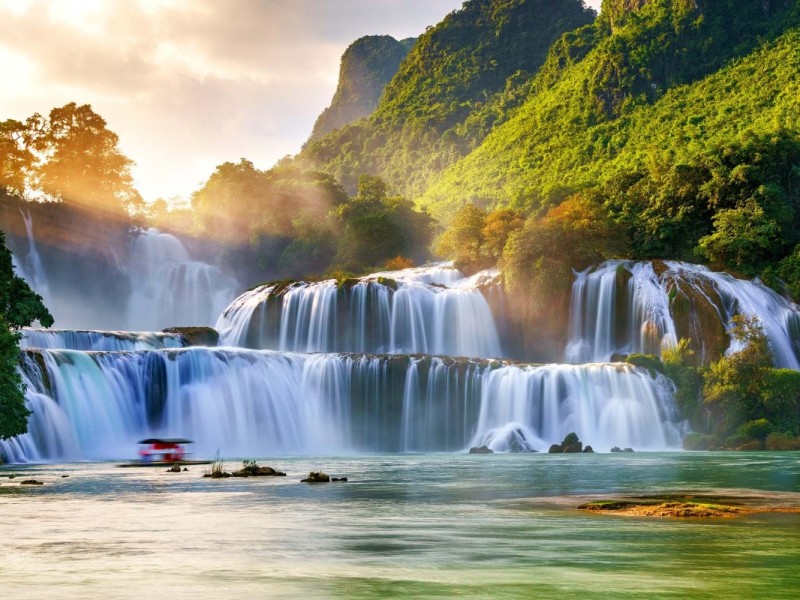
Natural Marvels That Define Cao Bang
Cao Bang is renowned for its stunning natural attractions that have become iconic symbols of the region. From the majestic cascades of Ban Gioc Waterfall to the captivating caves of Nguom Ngao, this province offers visitors countless natural wonders that leave lasting impressions.
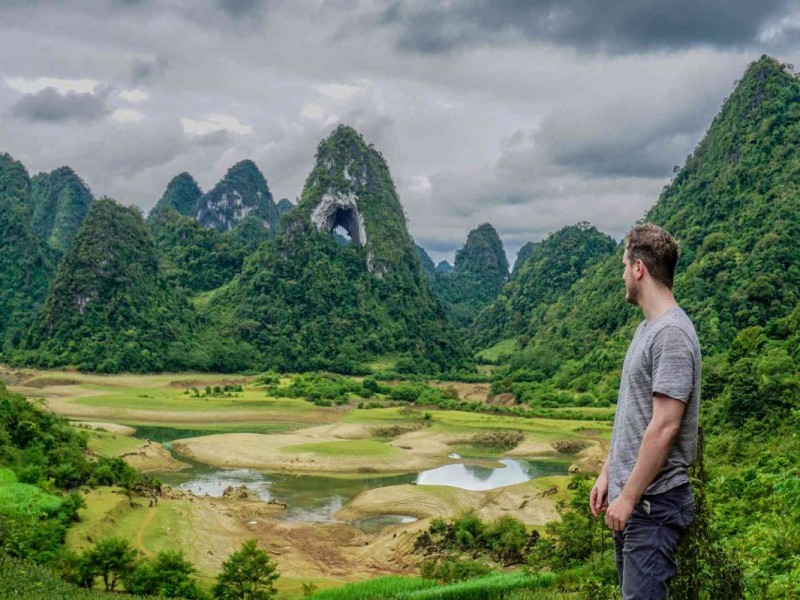
Ban Gioc Waterfall – Nature’s Masterpiece
Ban Gioc Waterfall is one of the most significant natural wonders in Vietnam and Southeast Asia. Its size, grandeur, and transnational location make it a must-visit destination for any traveler exploring Cao Bang.
Fourth Largest Waterfall in the World
Straddling the border between Vietnam and China, Ban Gioc Waterfall is recognized as one of the largest waterfalls in the world. The waterfall is 30 meters high and spans 300 meters, making it a breathtaking sight for all who visit. Its powerful cascades create a roaring sound that echoes through the valley, providing an unforgettable auditory experience.
Ideal for Nature Photography
The waterfall is a paradise for nature photographers. The changing light throughout the day creates stunning photo opportunities, especially during sunrise and sunset when the golden light transforms the waterfall into a magical scene. Photographers flock to Ban Gioc to capture its beauty, whether it’s the waterfall itself or the lush landscapes that surround it.

Nguom Ngao Cave – A Hidden Natural Marvel
For those who enjoy exploring underground wonders, Nguom Ngao Cave is a must-visit site in Cao Bang. The cave is a hidden gem, offering visitors the chance to explore the region’s incredible limestone formations.
Limestone Formations
The limestone formations within Nguom Ngao Cave are awe-inspiring, with stalactites and stalagmites that have formed over thousands of years. These natural sculptures create a mystical environment that fascinates geologists and adventurers alike.
Guided Tours and What to Expect
Visitors can join guided tours through Nguom Ngao Cave, where they will learn about the cave’s geological history and the local legends surrounding it. The tours also provide practical tips on how to safely navigate the cave’s passages, ensuring that every visitor has an enriching experience.
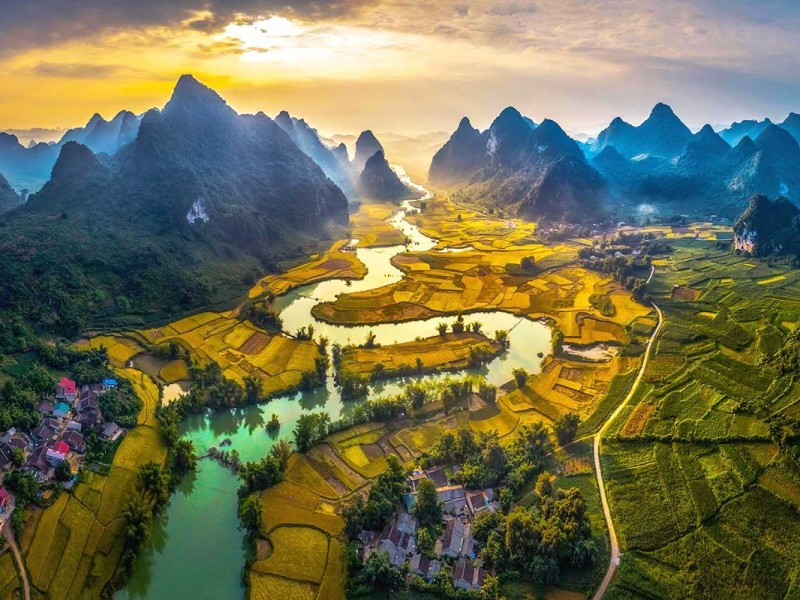
Cultural Richness of Cao Bang
Cao Bang is home to several ethnic communities, each with its own unique traditions and customs. The rich cultural diversity of the region offers visitors a rare opportunity to engage with local life, participate in traditional festivals, and experience the age-old practices that have been passed down through generations.
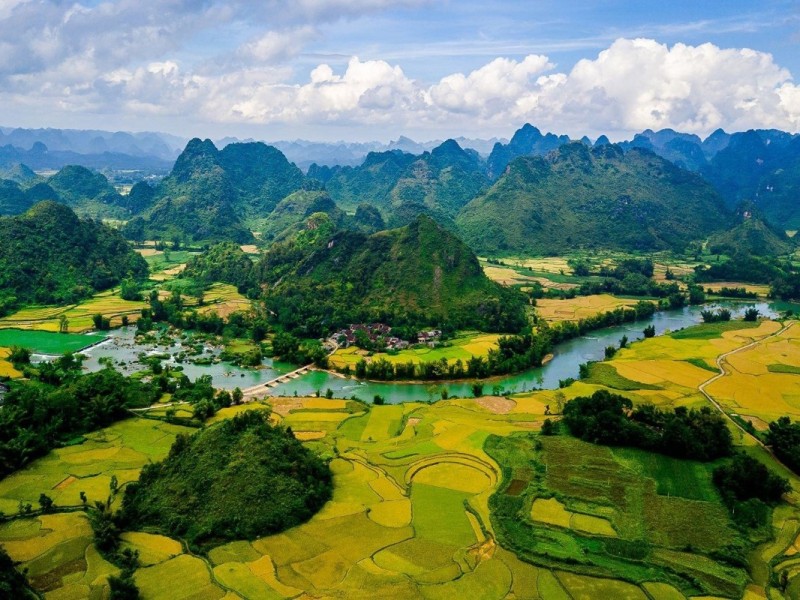
Ethnic Groups and Traditions
Cao Bang is known for its ethnic diversity, with groups like the Tay, Nung, and Dao people maintaining their distinct cultural identities through traditional clothing, festivals, and community activities.
Tay, Nung, and Dao Communities
The Tay, Nung, and Dao ethnic groups are the predominant communities in Cao Bang, each with its own unique customs, clothing, and ways of life. Visitors can interact with these communities, learning about their agricultural practices, craftsmanship, and traditional ways of living.
Festivals and Traditions
Cao Bang’s ethnic groups celebrate various traditional festivals throughout the year. For example, the Long Tong Festival is a traditional agricultural celebration among the Tay people, where locals perform traditional dances and make offerings for a bountiful harvest. The Moi Me Trang Festival, celebrated by the Dao people, is a lively lunar celebration featuring colorful costumes and vibrant music.
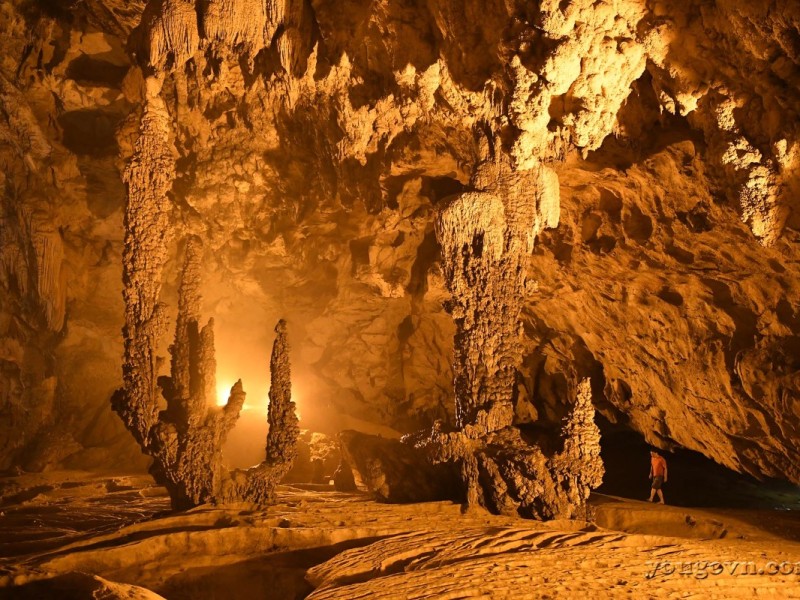
Cultural Highlights
Travelers to Cao Bang can also take part in cultural activities that offer insight into the region's artistic and musical heritage.
Traditional Brocade Weaving
One of the most treasured arts of the Tay and Nung people is traditional brocade weaving. Visitors can watch local artisans weave intricate patterns using ancient techniques, and even try their hand at weaving themselves.
Cultural Performances and Music
Local festivals often feature traditional music and dance performances, giving visitors the chance to experience the cultural heritage of Cao Bang up close. Performances range from traditional instruments to folk dances, creating an immersive cultural experience for travelers.
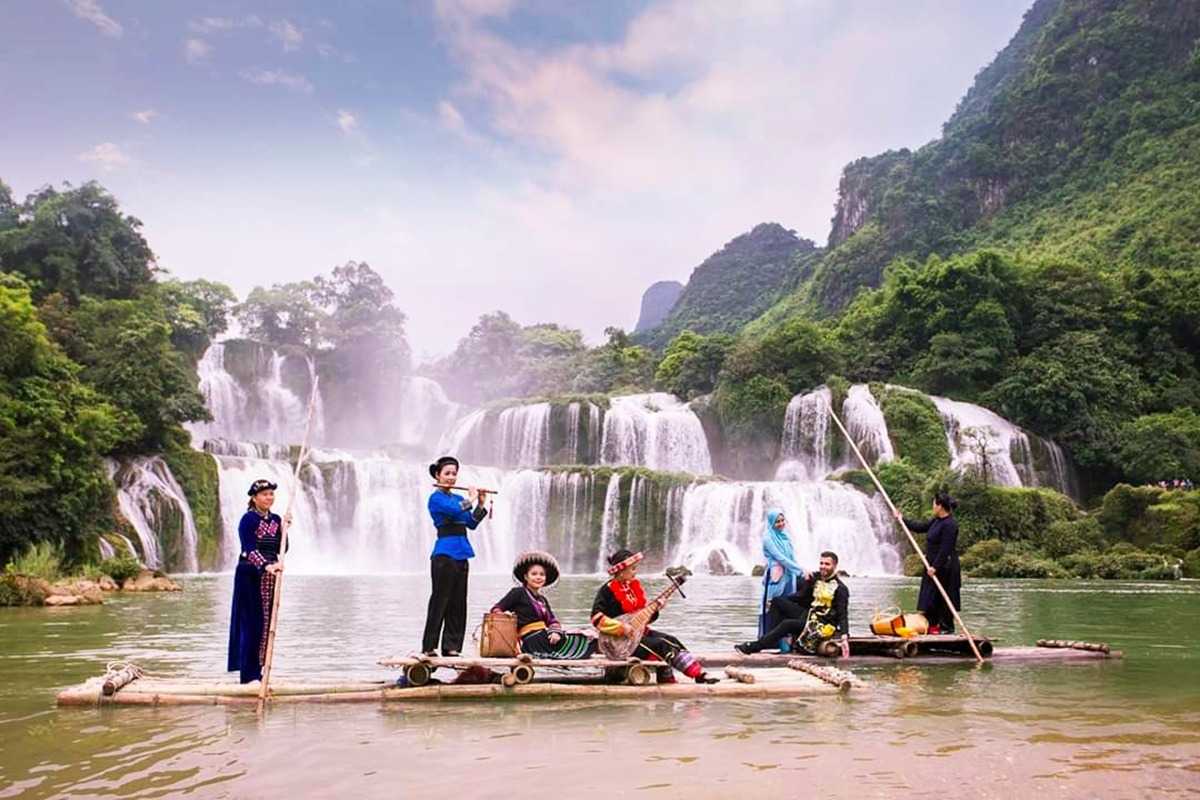
Cao Bang’s Must-Visit Destinations
Cao Bang is home to some of Vietnam's most breathtaking natural and historical landmarks. This section explores the top attractions that every traveler must see, offering an in-depth look at the beauty and history that define this remarkable province.

Exploring Ban Gioc Waterfall
As the most iconic site in Cao Bang, Ban Gioc Waterfall is a must-see for any visitor. This majestic waterfall, located on the border between Vietnam and China, is an awe-inspiring natural wonder that attracts nature lovers, adventurers, and photographers alike.
Best Time to Visit Ban Gioc
The best time to visit Ban Gioc Waterfall is during the rainy season, from June to October, when the water flow is at its peak, creating a powerful cascade that fills the air with mist and the sound of rushing water. However, the dry season, from November to May, offers clearer views, making it perfect for photography enthusiasts who want to capture the waterfall's beauty without the heavy mist. Each season offers a unique experience, and visitors should plan their trip according to their preferences.
Activities at Ban Gioc
Visitors to Ban Gioc can enhance their experience by taking a boat ride along the Quay Son River, getting as close as possible to the cascading water. This offers a thrilling perspective of the falls from below, allowing you to feel the spray and take stunning close-up photos. Additionally, hiking trails around the waterfall offer panoramic views of the surrounding landscapes. For those seeking a more spiritual experience, a visit to the nearby Truc Lam Phat Tich Pagoda provides a peaceful retreat with breathtaking views of the falls and the lush countryside.
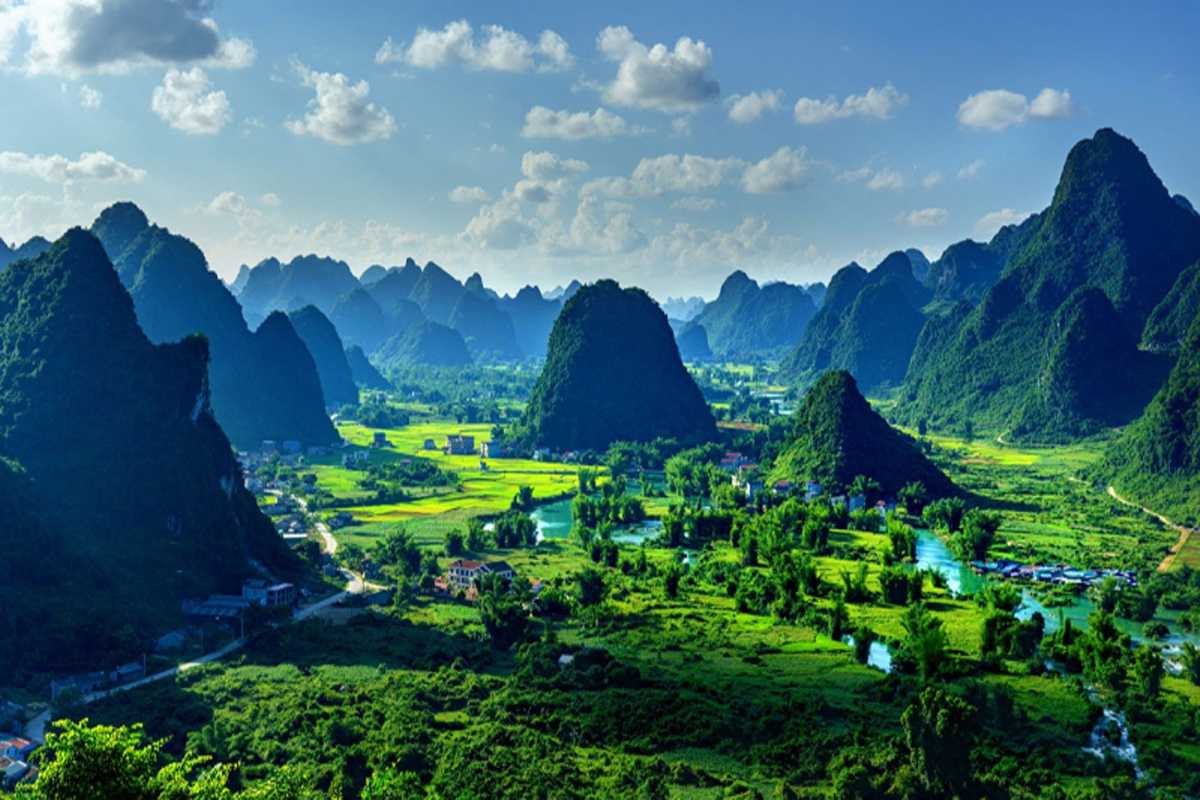
Nguom Ngao Cave
Just a short drive from Ban Gioc Waterfall, Nguom Ngao Cave offers visitors a chance to explore one of the most beautiful limestone caves in Vietnam. Known for its impressive stalactites and stalagmites, this cave is a hidden gem waiting to be discovered.
Guided Tours Inside the Cave
Several guided tours are available to explore Nguom Ngao Cave, taking visitors through its winding passages and vast chambers. The cave’s interior is a masterpiece of natural formations, with stalactites and stalagmites that have developed over thousands of years. Knowledgeable guides share insights into the cave’s history and geological significance, making the tour both educational and awe-inspiring. Wildlife enthusiasts may also be thrilled to discover that the cave is home to rare species of bats, adding a touch of adventure to the exploration.
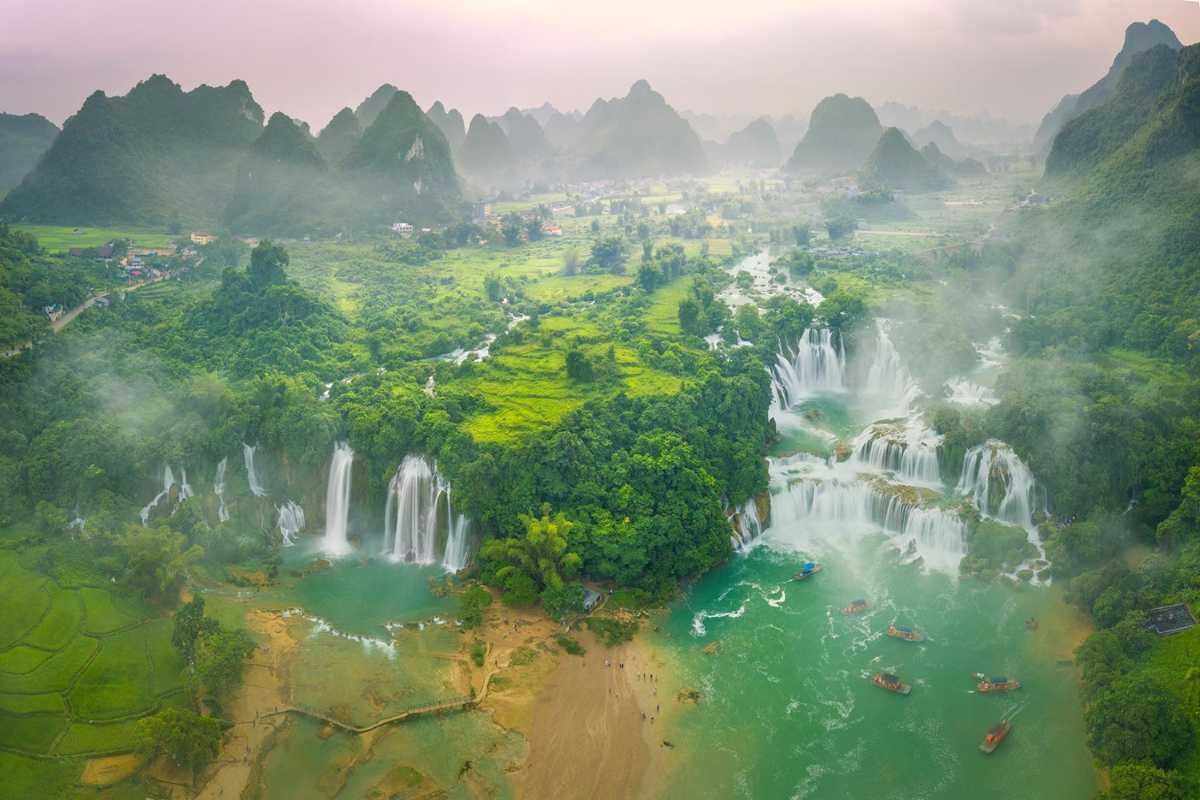
Thang Hen Lake
For travelers seeking a peaceful and scenic destination, Thang Hen Lake is the perfect getaway. This stunning lake is made up of 36 interconnected lakes, each offering a serene escape into nature.
Kayaking Adventures
One of the best ways to experience the tranquility of Thang Hen Lake is by kayaking. Paddling across its calm waters, visitors can explore the natural beauty that surrounds them, including lush forests and limestone cliffs. Kayaking here offers a chance to connect with nature, away from the crowds, and enjoy the peaceful sounds of the wilderness. It’s an ideal activity for families, couples, and solo travelers looking for relaxation and adventure in equal measure.
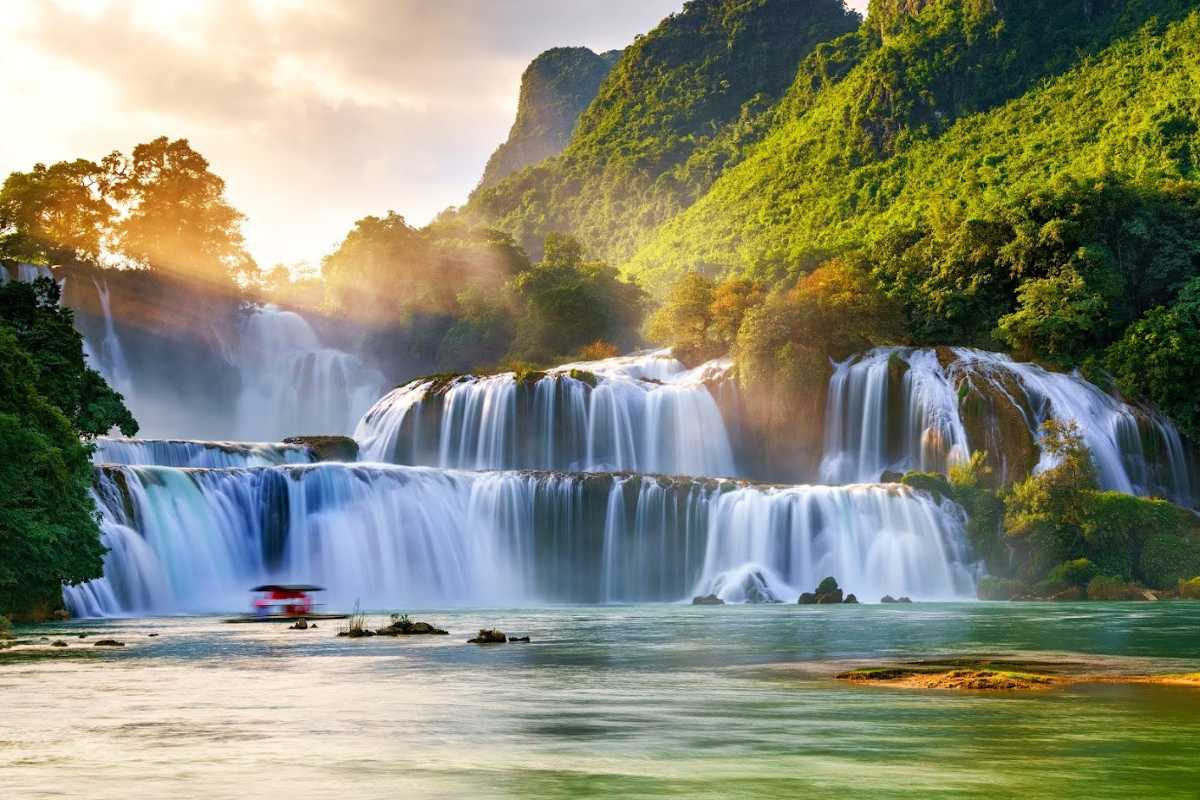
Cultural Experiences in Cao Bang
Beyond its natural beauty, Cao Bang is rich in culture, with vibrant festivals and welcoming local communities that offer travelers a unique glimpse into the region’s traditional way of life. Engaging with the local culture is a highlight of any visit to Cao Bang.
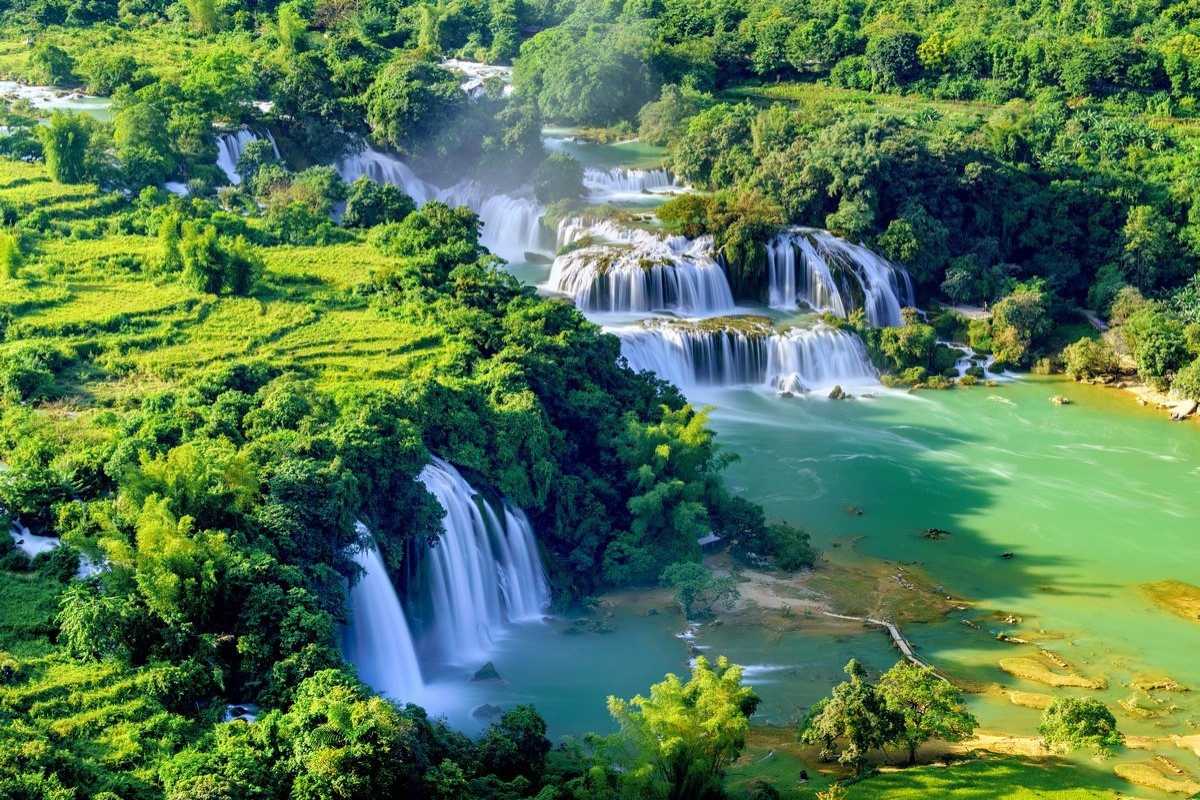
Traditional Festivals in Cao Bang
Cao Bang is home to a variety of festivals that celebrate the region’s agricultural heritage, religious beliefs, and cultural diversity. These festivals offer travelers an opportunity to participate in the local way of life and experience the region’s traditions firsthand.
Long Tong Festival – Celebrating Agricultural Prosperity
The Long Tong Festival, celebrated by the Tay people, is one of the most important agricultural festivals in Cao Bang. Held at the start of the farming season, this festival is dedicated to praying for good weather, abundant harvests, and prosperity for the community. Travelers who visit during the festival can witness traditional rituals, enjoy local food, and participate in folk games and performances. It’s a lively and colorful event that showcases the deep connection between the people of Cao Bang and their land.
Moi Me Trang Festival – A Lunar New Year Celebration
Another significant festival in Cao Bang is the Moi Me Trang Festival, celebrated by the Dao people during the Lunar New Year. This festival is a time to honor the Moon Mother, a revered deity in Dao culture. Locals offer food and flowers to the Moon Mother, while traditional singing and dance performances bring the festival to life. Travelers can immerse themselves in the cultural atmosphere and experience the hospitality of the Dao community during this festive time.
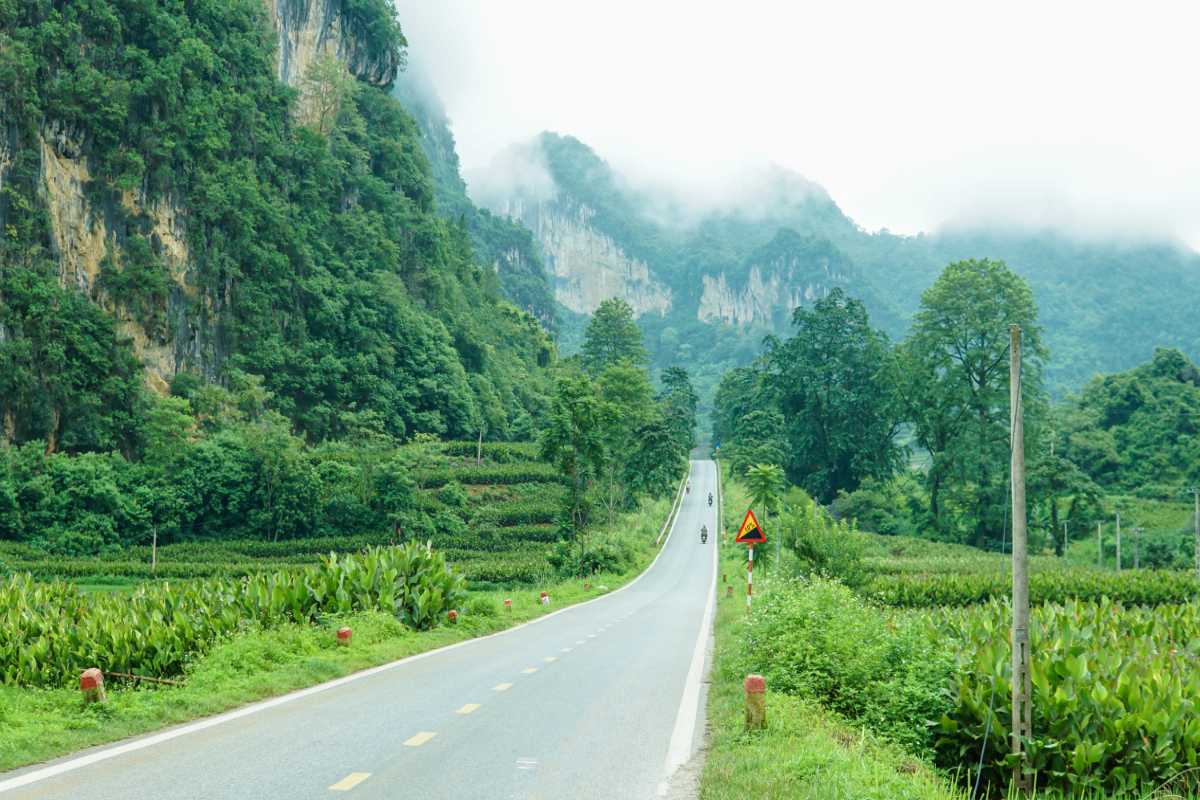
Experiencing Local Life in Cao Bang’s Villages
One of the most rewarding experiences for travelers to Cao Bang is staying in local villages and engaging with the Tay and Nung communities. Homestays provide an authentic and immersive cultural experience, allowing visitors to learn about local customs and traditions firsthand.
Homestays in Ethnic Villages
Visitors to Cao Bang can stay with local families in Tay and Nung villages, where they will experience the warmth of traditional hospitality. Homestays offer travelers the chance to live like a local, participating in daily activities such as farming, cooking, and crafting. It’s a unique opportunity to learn about the region’s ethnic diversity and traditional ways of life while forming personal connections with the people who call Cao Bang home.
Traditional Tay Cuisine
Food is an integral part of the cultural experience in Cao Bang, and travelers are encouraged to sample the region’s unique dishes. One of the most famous local delicacies is ant egg cake, made from ant eggs, rice flour, and herbs. Another must-try dish is sour pho, a tangy and refreshing variation of Vietnam’s national dish. These traditional foods offer a taste of Cao Bang’s culinary diversity, reflecting the flavors of the land and the traditions of the people.
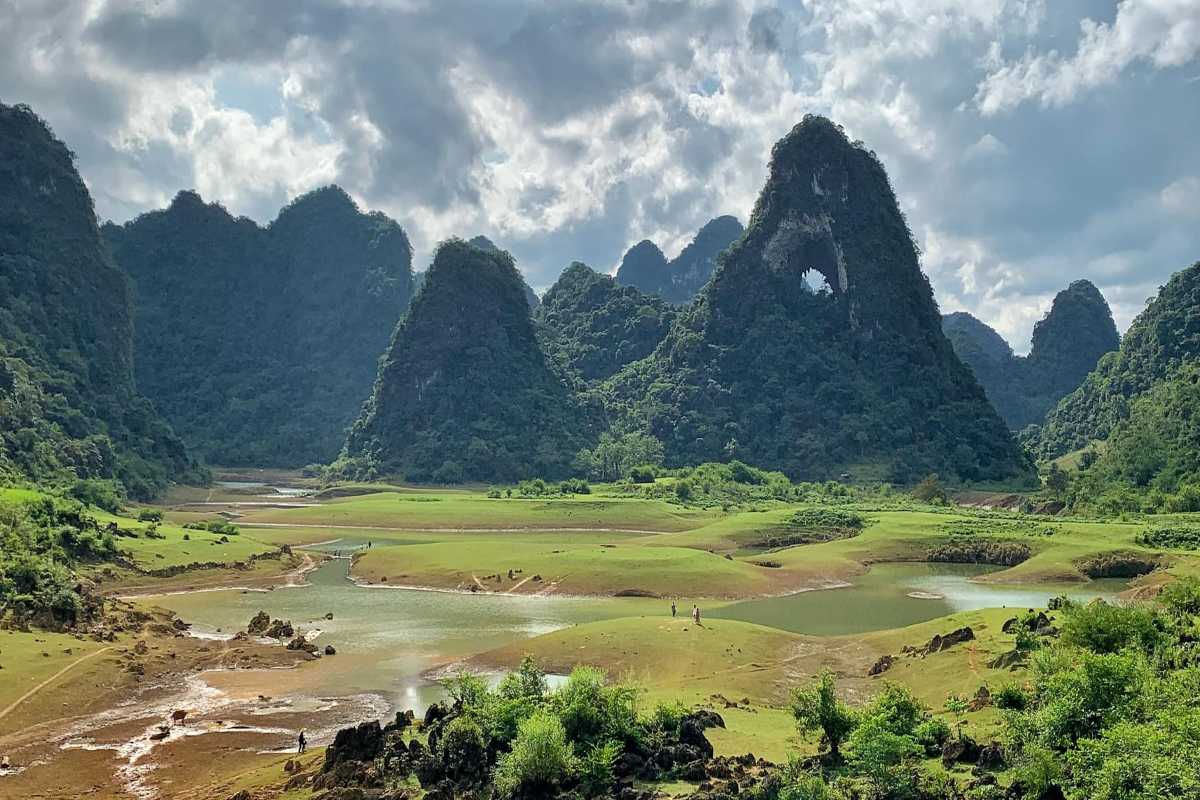
Practical Travel Tips for Cao Bang Visitors
To ensure a smooth and enjoyable trip to Cao Bang, it’s important to plan ahead and be aware of the best travel options and accommodations available.
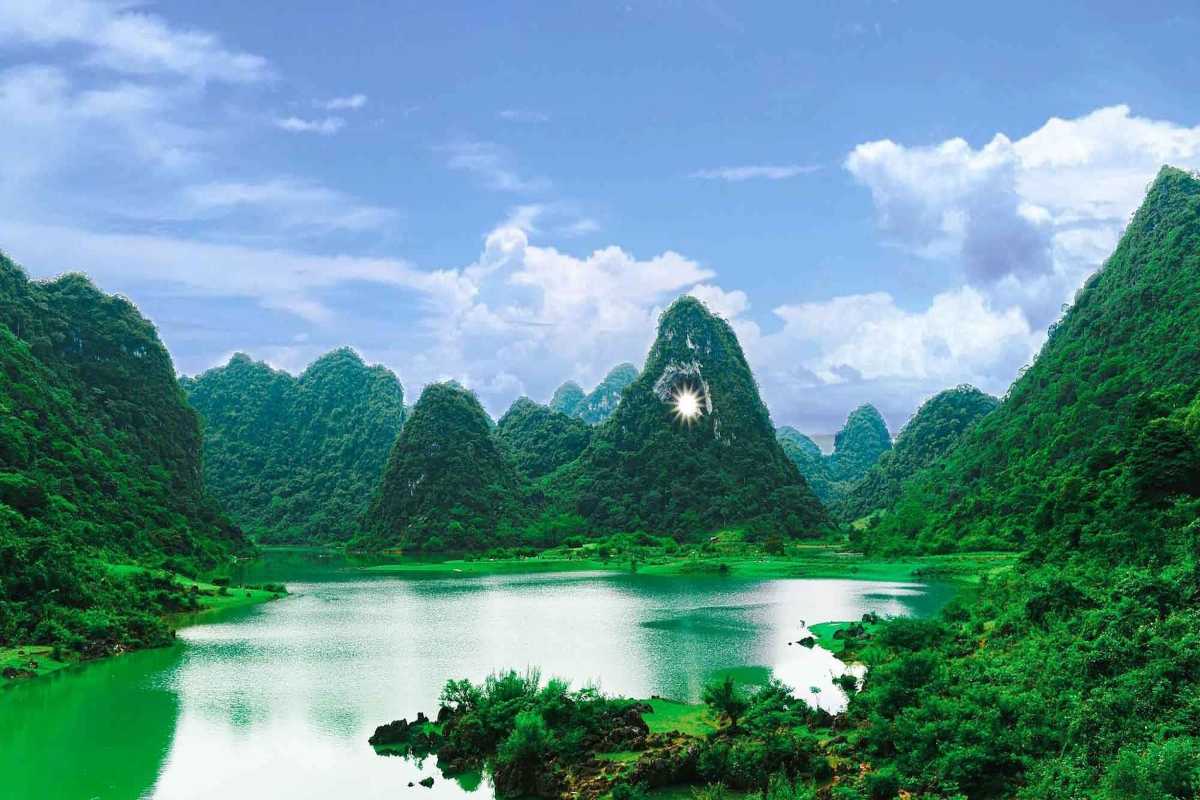
How to Get to Cao Bang from Hanoi
There are several ways to travel to Cao Bang from Hanoi, with options ranging from affordable bus services to private car hires for a more personalized journey.
Bus and Private Car Options
For budget-conscious travelers, taking a bus from Hanoi to Cao Bang is a popular option. Several reputable bus companies operate daily routes, with travel times ranging from 6 to 8 hours depending on traffic and weather conditions. Buses are equipped with comfortable seating and air conditioning, making the journey as pleasant as possible. Alternatively, travelers looking for more comfort and flexibility can hire a private car, which allows for stops along the way to take in the scenic views and visit smaller towns en route to Cao Bang.
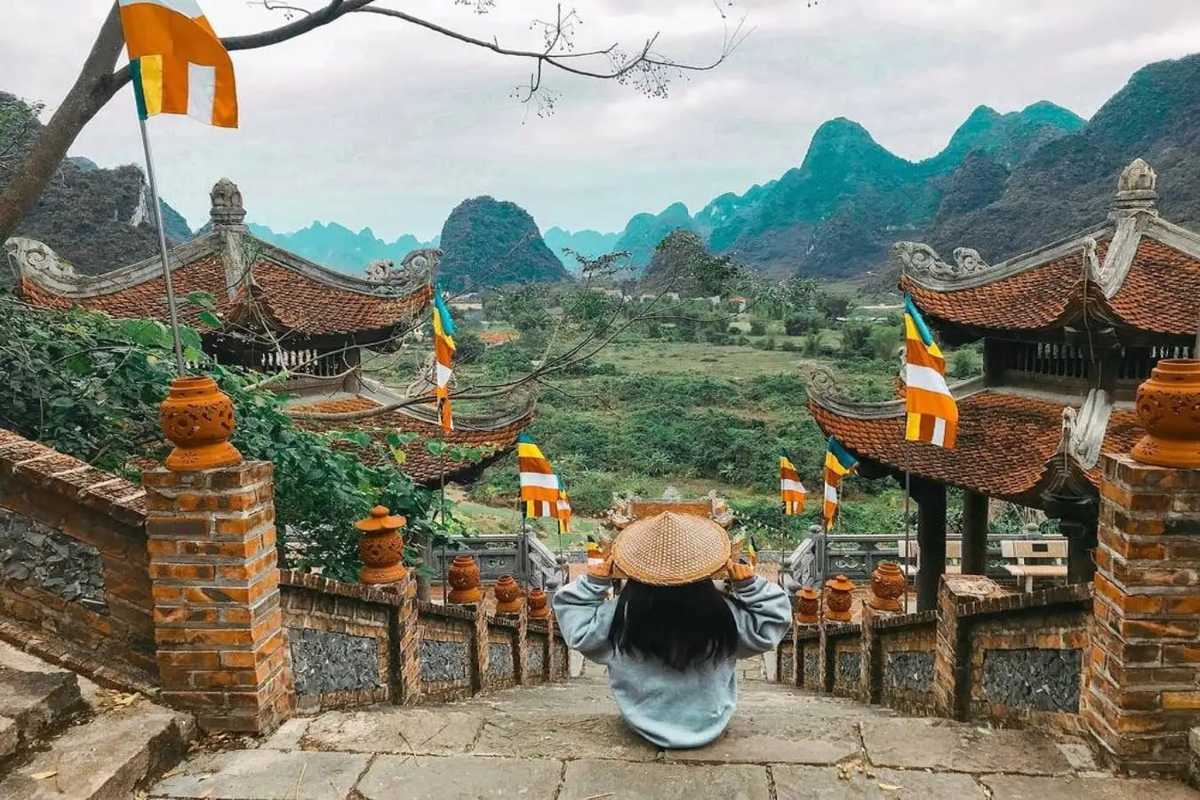
Where to Stay in Cao Bang
From cozy homestays to eco-friendly hotels, Cao Bang offers a variety of accommodation options to suit different travel preferences and budgets.
Homestay and Hotel Recommendations
For travelers seeking an authentic experience, staying in a homestay with a local family near Ban Gioc Waterfall is highly recommended. These accommodations are budget-friendly and provide a unique opportunity to experience local life. For those who prefer more comfort, there are several family-run guesthouses and eco-friendly hotels in Cao Bang City that offer modern amenities while still maintaining a connection to the local culture. These accommodations cater to solo travelers, couples, and families, providing options for every type of visitor.
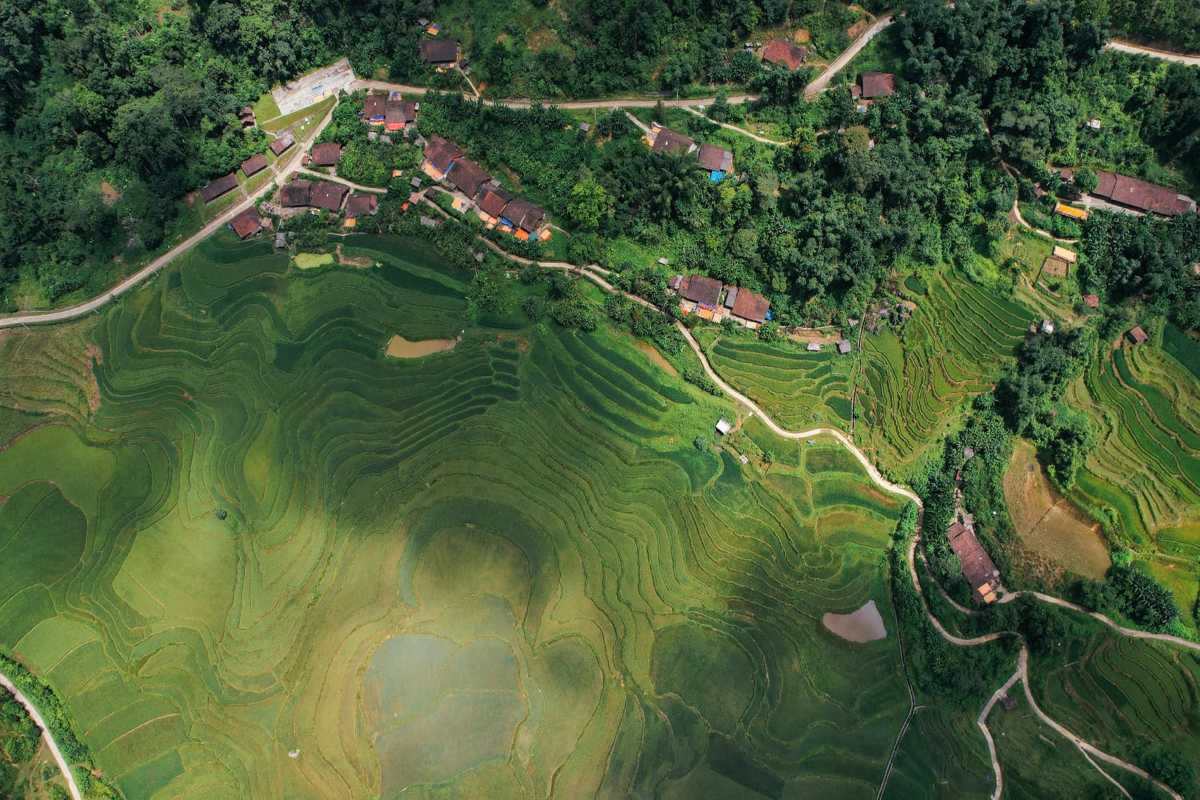
Why Cao Bang Should Be on Your Travel List
Cao Bang stands out as one of Vietnam’s most stunning and unspoiled provinces. Whether you’re seeking natural beauty, adventure, or cultural immersion, this destination offers it all in abundance. In this section, we’ll explore why Cao Bang should top your travel list, focusing on the most memorable experiences that will leave a lasting impression.

Unforgettable Nature Experiences
One of the biggest draws to Cao Bang is its breathtaking natural scenery. From majestic waterfalls to misty mountain peaks, the region offers a series of awe-inspiring landscapes that cater to both adventure seekers and those looking for a peaceful retreat.
Ban Gioc at Sunrise
Imagine standing at the edge of Ban Gioc Waterfall as the first light of dawn breaks over the horizon. The mist rising from the falls creates a mystical atmosphere, and the soft glow of the morning sun casts a golden light on the water, making it shimmer like a million tiny diamonds. Witnessing Ban Gioc at sunrise is a magical experience that stays with travelers long after they’ve left. The tranquility of the early morning, coupled with the sheer beauty of the waterfall, evokes a deep emotional connection to nature, making it a must-see for anyone visiting Cao Bang.
Trekking Through Cao Bang’s Mountains
Cao Bang is a paradise for trekking enthusiasts, offering various routes that lead travelers through some of Vietnam’s most picturesque landscapes. Trekking here is not just about the physical journey—it’s about the connection you form with the land. Whether hiking through the dense, emerald-green forests or navigating limestone formations, the trails provide an immersive experience where visitors can appreciate the untouched beauty of the region. Along the way, trekkers may come across ethnic villages tucked away in the mountains, adding a cultural dimension to the adventure. The sense of accomplishment from reaching these remote areas, combined with the stunning views, creates an unforgettable experience for adventurers.
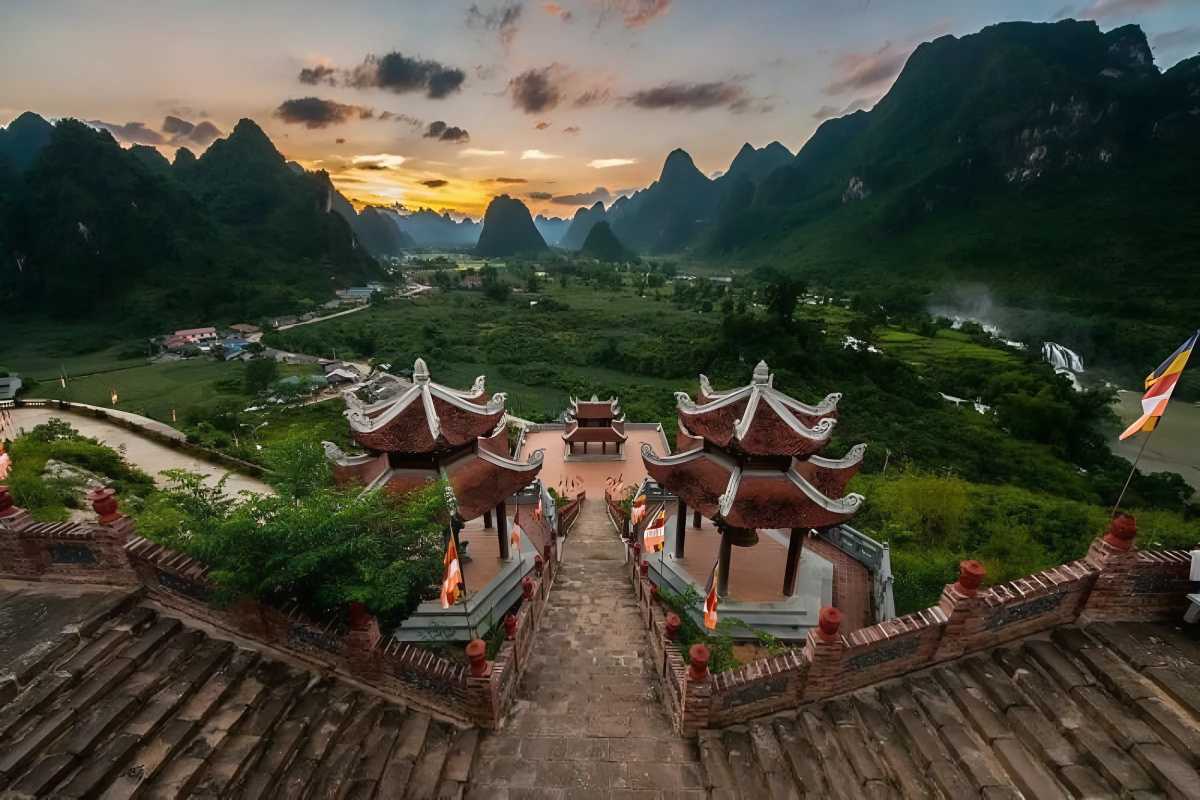
Adventure Seekers’ Paradise in Cao Bang
For those looking for more than just sightseeing, Cao Bang offers a range of activities that challenge and thrill. Its rugged landscapes provide the perfect backdrop for adventure, from trekking to discovering hidden natural gems.
Trekking Through Cao Bang’s Remote Mountains
For seasoned hikers, the remote mountains of Cao Bang present the ultimate trekking adventure. These routes are off the beaten path, taking you deep into areas untouched by tourism. Along the way, you’ll encounter hidden caves, cascading waterfalls, and villages where time seems to stand still. The trek through these remote areas is both physically demanding and incredibly rewarding, offering a glimpse of Cao Bang’s pristine wilderness and its uncharted beauty. Every step through these mountains brings a sense of discovery and awe, as if you are the first to set foot in these remote areas.
Exploring Phia Oac Mountain’s Winter Frost
A unique adventure awaits travelers who visit Phia Oac Mountain during the colder months. Known for its winter frost, the mountain transforms into a surreal landscape with frost-covered trees and grass, giving the area an almost otherworldly appearance. The crisp mountain air and the sight of frost on the ground create a serene, dream-like atmosphere that is perfect for trekkers and photographers alike. Exploring Phia Oac Mountain in winter is a rare opportunity to see a different side of Vietnam’s natural beauty, one that most tourists never experience.
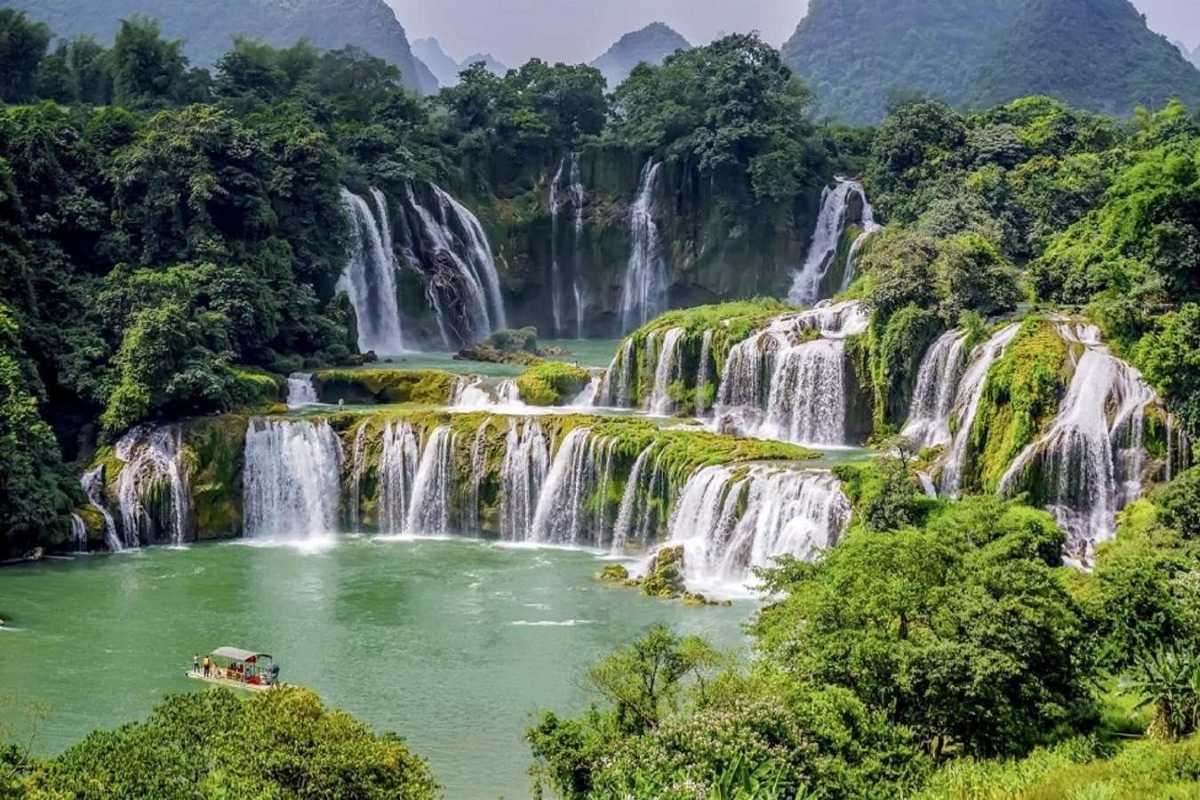
Immerse Yourself in Cao Bang’s Culture
Beyond its natural wonders, Cao Bang is rich in culture, offering travelers the chance to immerse themselves in the traditions and daily life of its ethnic communities. Whether through festivals, local cuisine, or staying with local families, visitors will leave with a deeper understanding of Cao Bang’s cultural heritage.
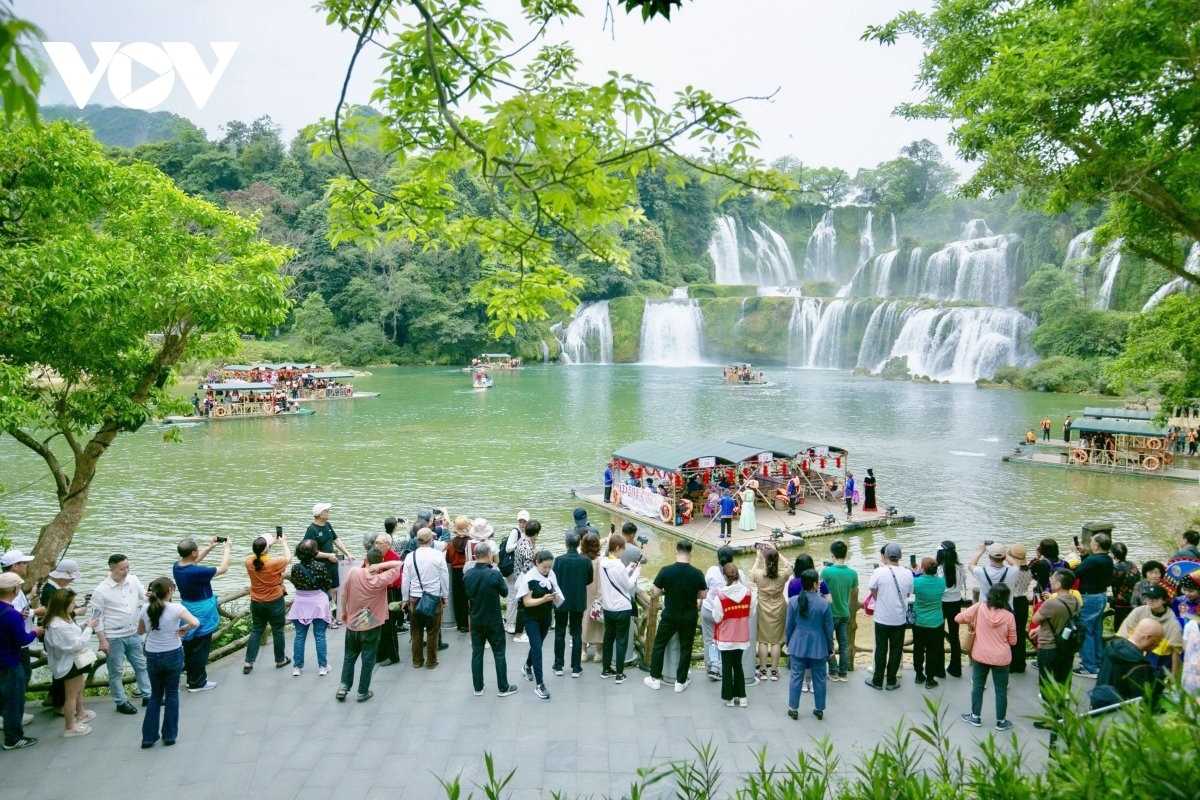
Stay with Local Families
One of the most enriching experiences in Cao Bang is the opportunity to stay with local families in traditional Tay and Nung villages. Homestays provide a window into the lives of these ethnic communities, offering travelers a chance to experience their hospitality, customs, and way of life up close.
Homestays in Tay and Nung Villages
Staying in a homestay is more than just a place to sleep—it’s an invitation into the heart of Cao Bang’s culture. Visitors can participate in daily activities like farming, cooking, or even traditional crafts, gaining firsthand experience of the lifestyle of the Tay and Nung people. In the evenings, guests gather with their host families to share meals made from locally sourced ingredients, creating moments of connection that transcend language barriers. The warmth and generosity of the local people leave a lasting impression, making the homestay experience one of the most memorable aspects of visiting Cao Bang.

Cao Bang’s Culinary Delights
The food of Cao Bang is as diverse and rich as its culture. Travelers are encouraged to indulge in the unique local dishes that reflect the region’s natural bounty and cultural traditions. From savory to sweet, Cao Bang’s culinary offerings are sure to delight the senses.
Taste the Traditional Ant Egg Cake
For the adventurous foodie, Cao Bang offers a culinary experience that you won’t find anywhere else in Vietnam—ant egg cake. This local delicacy, made from rice flour and the eggs of black ants, is steamed and served with a variety of herbs and spices. Though it may sound unusual, ant egg cake is highly regarded by the local people for its unique flavor and nutritional value. It’s just one example of the many culinary surprises that await visitors in Cao Bang. Other local dishes, such as sour pho, offer a fresh take on traditional Vietnamese cuisine, making Cao Bang a destination not just for nature lovers, but for food enthusiasts as well.

Plan Your Trip to Cao Bang Today
Now that you’ve explored the incredible natural beauty, cultural richness, and adventure possibilities of Cao Bang, it’s time to plan your journey. From booking tours to ensuring you have the right travel essentials, here’s everything you need to know to organize a seamless and unforgettable trip.

Booking Guided Tours and Accommodations
To fully experience Cao Bang, having local expertise is key. Guided tours offer a deep dive into the region’s most captivating attractions, while accommodations range from charming homestays to comfortable hotels. Here’s how to book both and make the most of your stay.
How to Book Ban Gioc Waterfall Tours
Visiting Ban Gioc Waterfall is a must when traveling to Cao Bang, and booking a guided tour ensures that you don’t miss any of its awe-inspiring sights. Trusted tour operators, such as Cao Bang Adventure and Northern Vietnam Tours, offer a range of packages tailored to both group and private tours. Many packages include additional stops at Nguom Ngao Cave and Truc Lam Phat Tich Pagoda, providing a well-rounded exploration of the area. To avoid disappointment, especially during peak seasons, it’s recommended to book your tour in advance.

Travel Essentials for Cao Bang
Packing appropriately for Cao Bang ensures that you can fully enjoy its outdoor adventures and diverse climates. Whether you’re trekking through the mountains, exploring caves, or visiting waterfalls, being prepared is essential for comfort and safety.
What to Pack for Cao Bang Adventures
When planning your adventure in Cao Bang, pack for a range of outdoor activities. Essential items include sturdy trekking shoes for hikes through forested areas and mountain trails. For those visiting during the rainy season, waterproof gear is a must to stay dry while exploring attractions like Ban Gioc Waterfall. Other must-haves include insect repellent, sunscreen, and a refillable water bottle. For overnight stays in remote areas, particularly if you choose a homestay, it’s advisable to bring basic toiletries and any personal medications you may need.

Best Routes to Cao Bang
Cao Bang is located in northern Vietnam, making it a peaceful yet accessible destination for travelers. Whether you’re departing from Hanoi or other parts of Vietnam, here’s how to reach this hidden gem efficiently.
Transportation Tips
The most common route to Cao Bang is by bus or private car from Hanoi. Several bus companies, including Cao Bang Express and Green Bus, operate daily services from Hanoi’s My Dinh Bus Station, with travel times ranging from 6 to 8 hours depending on road conditions. For those looking for more flexibility, renting a car or hiring a private driver allows you to explore the region at your own pace. The road to Cao Bang winds through picturesque landscapes, making the journey part of the adventure itself. Be sure to check the road conditions, especially if traveling during the rainy season, as some areas may be slippery.

Discover Cao Bang’s Untouched Beauty Today
Cao Bang is a destination that captures the heart of every traveler with its raw natural beauty, rich cultural tapestry, and unique experiences. Whether you’re marveling at the grandeur of Ban Gioc Waterfall, trekking through remote mountain trails, or immersing yourself in the traditions of local ethnic communities, Cao Bang offers something truly special. This journey takes you off the beaten path to discover a part of Vietnam that remains relatively untouched by mass tourism.
From adventurous treks to serene lakes and cultural festivals, Cao Bang has it all. So why wait? Now is the perfect time to book your trip and experience firsthand what makes this region so extraordinary. Whether you’re a solo traveler, a couple seeking a romantic getaway, or a family in search of adventure, Cao Bang promises memories that will last a lifetime. Plan your journey today and step into one of Vietnam’s most stunning natural and cultural landscapes.
Trường Sơn
Faqs
Cao Bang is known for its spectacular natural landscapes and rich cultural heritage. It is famous for Ban Gioc Waterfall, one of Asia’s largest waterfalls, and Pac Bo Cave, a historic site linked to Vietnam’s revolutionary history. The province also features ethnic minority villages and stunning limestone mountains.
Visitors are drawn to Cao Bang for:
- The majestic views and roaring cascades of Ban Gioc Waterfall along the Vietnam-China border.
- The historical significance of Pac Bo Cave, where Ho Chi Minh once led revolutionary efforts.
- The vibrant traditions of ethnic groups like the Tay, Nung, and Dao peoples.
- Scenic trekking routes and serene lakes such as Thang Hen Lake.
Experience the blend of natural beauty and cultural richness that makes Cao Bang unique on your next trip.
The most common way to reach Cao Bang from Hanoi is by road, using either bus or private car. Buses depart daily from Hanoi’s My Dinh Bus Station and take about 6 to 8 hours depending on traffic and road conditions. Private cars offer more flexibility and comfort, allowing stops at scenic spots along the route.
Key travel options include:
- Taking a direct bus with companies like Cao Bang Express or Green Bus.
- Hiring a private car or taxi for a customized itinerary.
- Renting a motorbike for adventurous travelers comfortable with long-distance riding.
Check road and weather conditions before traveling, especially during the rainy season. Planning your trip carefully will ensure a smooth journey to Cao Bang.
The best time to visit Ban Gioc Waterfall is during the rainy season from June to October when the waterfall’s flow is at its strongest and most impressive. The heavy water creates powerful cascades and a misty atmosphere that enhances the experience.
Alternatively, the dry season from November to May offers clearer views and better conditions for photography, although the water flow is lighter. Both seasons provide unique perspectives:
- Rainy season for dramatic water volume and vibrant greenery.
- Dry season for crisp views and easier trekking.
Plan your visit according to whether you prefer dramatic waterfalls or clear scenic views.
Yes, Ban Gioc Waterfall requires a small entry fee, usually around 40,000 Vietnamese Dong (approximately 1.7 USD). This fee helps maintain the site and support local tourism.
Pac Bo Cave may have a minimal entrance fee or suggested donation depending on current management, but it is generally affordable and accessible. Many guided tours include entrance fees in their packages.
Check local updates before visiting, as fees can vary seasonally or due to special events. Budgeting for these fees ensures a hassle-free experience.


